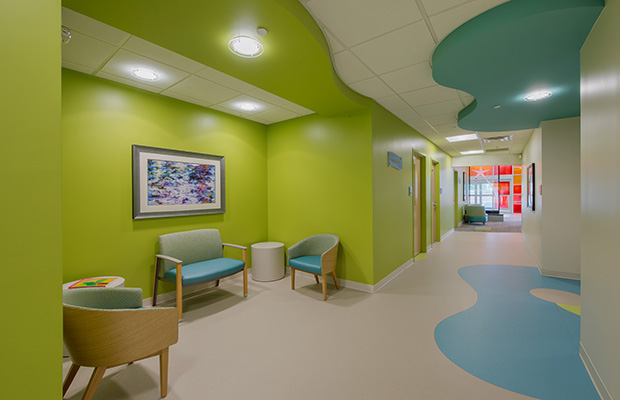
Navjot Dhillon makes the case for better healthcare environments.
The onus on healthcare design professionals to create buildings that are a great deal more than places to heal is part of a significant movement towards making healthcare establishments increasingly sustainable and far better environments for the patients, staff and visitors that inhabit them.
Today’s healthcare buildings must therefore be environmentally-friendly, highly sustainable places with low CO2 emissions and capable of interaction with both inside and outside environments. They must also be healthy places that play a pivotal role in the natural healing process by improving patient recovery, bettering staff performance and enhancing the experience of visitors. The NHS 2009 Carbon Reduction Strategy for England was a pioneering initiative in its day, but now healthcare’s sustainability goals reach well beyond carbon reduction making overall sustainability increasingly urgent. This drive is reflected by the international WELL Building Institute certification which focuses on health and well-being through building design and its positive impact on human behavior.
Healthcare providers have a duty of care to ensure that appropriate guidelines are in place, the Department of Health’s 2013 ‘Health Technical Memoranda (HTM), which provides general rules on the design of healthcare buildings, remains a key benchmark. But without updates to HTMs, independent testing by global manufacturers is helping to provide the peace of mind combined with outstanding performance that the industry needs from building products like floorings.
Understandably, healthcare specifiers rely heavily on flooring manufacturers and flooring contractors to provide reliable, sustainable flooring solutions that meet or exceed requirements. It therefore falls upon manufacturers to test their products to international standards; however, some are going one step further by testing standards in broader terms for risk areas, air quality, cleanability and disinfection.
The impact of air quality by particulate and molecular emissions on the health and well-being of people inside buildings is becoming increasingly recognised. Gerflor’s Ultra Clean Standard, for example, was developed as a benchmark for industry. As industry is demanding superior air quality from materials including flooring, testing platforms such as this could also be applied to healthcare where there is no benchmark at present.
The aim of the Ultra Clean Standard test for particulate emissions is to determine the levels of particulates emitted by the floor or wall covering when subjected to abrasion stimulus. The French Standard NF S90-351 is based on ISO 14644-1 and specifies the particulate cleanliness class necessary to obtain the maximum concentration of particles – between 0.1µm and 5.0 µm/m3 – per risk zone in operating theatres.
As all materials emit VOCs, with some products negatively impacting on inside air quality. By assessing the flooring for compliance with ISO 16000-6, emissions are measured after 3 and 28 days. Floorings with top results will show almost non-existent toxic VOC levels and perform better than market requirements. Alongside floorings that improve air quality, pioneering products are assisting in the fight against hospital and healthcare acquired infections. Product innovations are also assisting healthcare professionals in making longer-term cost savings through sustainable solutions that lower energy consumption through simplified, eco-friendly maintenance routines without the use of harsh chemicals. Cleanability and disinfection are now fundamental to healthcare flooring, especially in risk areas. Cleanability can be assessed by determining the quantity of residual contamination present on the surface after a series of set maintenance procedures. Whereas disinfection to determine the quantity of viable bacteria present on a surface after the disinfection process is compared with the results on a controlled surface.
Floorings with fungistatic and bacteriostatic treatments and surface treatments that can be cleaned with minimal water and detergent without polishing or waxing, are making enormous contributions to the environment by enabling best practice in cleaning and maintenance regimes and allowing floorings to retain their good looks with less up keep and greater ‘green impact’. With excellence in function, performance and sustainability in place and common requirements like cleanability, disinfection, slip resistance and infection available, the role of flooring in healthcare is to enhance the aesthetics of the surroundings. Above all however, forward -thinking manufacturers are stretching the sustainability boundaries, enabling healthcare professionals to design future proof buildings of the present and the future which take the significance of sustainability seriously and at the same time deliver eye-catching environments.
Learn more about Gerflor solutions, ask for a free sample or contact us to speak to a specialist today by calling 01926 622 600, emailing contractuk@gerflor.com, or visiting gerflor.co.uk for the latest innovations.
Navjot Dhillon is the UK Marketing Manager for international flooring specialists Gerflor.
